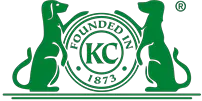Schnottie History
The Schnauzer, also known as a “Scooner”, is an all-black or salt and pepper colored medium-to-large-sized breed of purebred dog. The Schnauzer originates in Germany where it was used as both a herding and watchdog, and the name means “little shaver” in German. The first standard for the breed, written by the Verein für das Deutsche Hundewesen in 1879, described a dog with a beard and mustache and a long coat. The shorter, sleeker, modern version of the Schnauzer was developed by the working classes during the 19th century. The Standard Schnauzer, which is the most popular variety of the breed, is a medium-sized, square-proportioned, black and tan coated working dog. The coat may be straight or slightly curled and comes in several varieties such as smooth, longhaired, and wire-haired. The head is wedge-shaped and rectangular, with a broad muzzle, erect ears, and dark almond-shaped eyes. The Miniature Schnauzer is a smaller version of the Standard, typically weighing 11 to 25 pounds. The Giant Schnauzer is a larger variation of the Standard and has a height of 18 to 24 inches at the withers. The Giant is a robust, muscular, and heavily boned, and both sexes have a lion-like mane and beard. The Bearded Collie, or Beardie, is a herding and working dog breed that is thought to have originated from
Time of Origin
Unknown
Schnottie Physical Characteristics
The Schnauzer is a medium sized breed of dog that originates from the Alps. The breed has a wide variety of sizes, ranging from the miniature to the giant. The original function of the breed was to be a watchdog, hunt small game, and herd livestock. The medium-to-large size was most common.
Eye Colors
Brown
Nose Colors
Black
Coat Colors
Black, Sable, Gray, Brown
Height Range
Male Height Range: 22 – 25 inches
Female Height Range: 20 – 23 inches
Weight Range
Male Weight Range: 55 – 65 lbs
Female Weight Range: 50 – 60 lbs
Schnottie Health
Description of breed health.
Lifespan
12-13 yrs
Schnottie Health Concerns
Hip Dysplasia, Pancreatitis, Gastric Dilation Volvulus (GDV) or Bloat, Patellar Luxation, Elbow Dysplasia, Cataracts, Skin Allergies
Schnottie Temperament and Behaviour
The Schnoodle is an energetic, playful, and curious breed of dog. They have a very high energy level and require lots of exercise and mental stimulation. They are extremely smart, but can be stubborn and will try to manipulate their owners. They are generally friendly and sociable, but can be timid with new people and situations.
Schnottie Activity Requirements
Schnoodles are a cross between a Poodle and a Schnauzer. They are medium-sized, intelligent, and friendly, making them an ideal pet for families with children. A Schnoodle should be walked for at least half an hour every day. While they don’t need as much exercise as some other breeds, they still do enjoy a daily outing. A walk on leash, a romp in a fenced-in area, or a swim in a lake or ocean are all great ways to provide your Schoodle with exercise and enjoyment. If you are looking for a dog that enjoys an active lifestyle, you might find that a Schoodle isn’t the right fit for you. While they do require regular walks, they are not overly active. If running, hiking, and long walks aren’t some of your favorite things to do, a Schoodle may be the perfect dog for you.
Miles Per Day
10 miles
Activity Per Day
60 minutes
Daily Food
2.5 cups
Kennel Club Recognition

American Kennel Club
Not Recognized
Schnottie is part of the Unclassified group.
Visit the American Kennel Club website.

The Kennel Club
Not Recognized
Schnottie is part of the Unclassified group.
Visit the Kennel Club website.

Australian National Kennel Council
Not Recognized
Schnottie is part of the Unclassified group.
Visit the Australian National Kennel Council website.

Canadian Kennel Club
Not Recognized
Schnottie is part of the Unclassified group.
Visit the Canadian Kennel Club website.